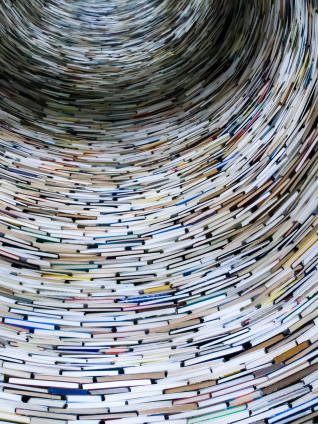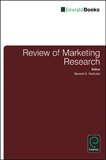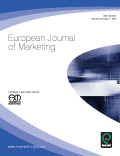Academic articles
Practitioner articles
Working papers
Books
Book chapters
Case studies
Other publications
Subject(s)
Ethics and social responsibility; Marketing
Keyword(s)
Attachment, identification, social identity, consumer-brand relationships, brand loyalty
We examine two conceptualizations of consumer-brand relationships: identification, as identity-based relationships between a consumer and a brand, and the related construct of attachment as a bond based on security and personal history with the brand.Predictions emanating from the two constructs’ disparate theoretical traditions regarding the relative antecedents and outcomes of these brand relationship constructs are tested in a survey of real consumer-brand relationships, where the two are likely to co-occur. Identification is more socially motivated, wherein the brand is used for “identity building” and impression management, such as through public endorsement. In contrast, attachment is more personally motivated; it is more likely to be founded on an intimate history with the brand and feelings of security inspired by the brand. This is the first work in marketing to explicitly compare identification with attachment in contexts where they co-occur. In doing so, it underscores the validity and usefulness of these two related but distinct relationship constructs.
With permission of Emerald
Volume
12
Journal Pages
151–174
Subject(s)
Technology, R&D management
Keyword(s)
social networks
Volume
93
Journal Pages
1687–1722
Subject(s)
Information technology and systems; Marketing
Keyword(s)
ROI, CRM, benefits realization, performance improvement, social media, big data
Marketing practice is increasingly shaped through the application of new technology, including customer relationship marketing (CRM) software, social media, analytics and search, with organisations investing heavily in these technologies. Yet, surprisingly, research by marketing scholars continues to question the profitability of IT-led marketing initiatives. If this is true, why do companies continue to make such investments? To explore this question, we examined research that has looked at the return on investments in IT-led marketing change. Analysing the findings of leading studies of the impact of CRM spend on financial and market performance, we suggest that marketing scholars make untested assumptions as to how expected payoffs are realized and thus generate incommensurate conclusions. Moreover, we found that marketing scholars adopt a very limited epistemology that is unsuited to the nature of the phenomenon being studied. For comparison, we explore how similar phenomena are studied by the information systems discipline. We conclude with implications for both marketing practice and research.
With permission of Emerald
Volume
49
Journal Pages
561–595
Subject(s)
Marketing
© 2014 Product Development & Management Association
Volume
32
Journal Pages
424–440
Subject(s)
Economics, politics and business environment
Keyword(s)
Social interactions, identification, incomplete information games
JEL Code(s)
C21, C23, C31, C35, C72, Z13
This paper provides a systematic analysis of identification in linear social interactions models. This is both a theoretical and an econometric exercise as the analysis is linked to a rigorously delineated model of interdependent decisions. We develop an incomplete information game that describes individual choices in the presence of social interactions. The equilibrium strategy profiles are linear. Standard models in the empirical social interactions literature are shown to be exact or approximate special cases of our general framework, which in turn provides a basis for understanding the microeconomic foundations of those models. We consider identification of both endogenous (peer) and contextual social effects under alternative assumptions on a priori information about network structure available to an analyst, and contrast the informational content of individual-level and aggregated data. Finally, we discuss potential ramifications for identification of endogenous group selection and differences between the information sets of analysts and agents.
With permission of the University of Chicago Press
Volume
123
Journal Pages
444–496
Subject(s)
Marketing
Keyword(s)
Goals, product evaluation, positive mood
Negotiating the pursuit of multiple goals often requires making difficult trade-offs between goals. In these situations, consumers can benefit from using products that help them pursue several goals at the same time. But do consumers always prefer these multipurpose products? We propose that consumers’ incidental mood state alters perceptions of products in a multiple-goals context. Four studies demonstrate that being in a positive mood amplifies perceptions of differences between multiple conflicting goals. As a consequence, consumers are less likely to evaluate multipurpose products as being able to serve multiple distinct goals simultaneously. We conclude by discussing implications of these findings for marketers of multipurpose products.
With permission of Elsevier
Volume
25
Journal Pages
296–303
Subject(s)
Ethics and social responsibility; Marketing
Keyword(s)
Corporate social responsibility, business–nonprofit alliance, nonprofit, Company involvement, company reputation, alliance fit
We investigate the effect of increased company involvement on consumer reactions to companies and nonprofits in business–nonprofit alliances to show that consumer reactions to the two parties in such alliances can, under certain conditions, diverge from each other. Specifically, we show that increased company involvement results in more positive consumer attitudes toward companies with low (but not high) reputation, while it leads to more positive consumer attitude toward nonprofits that partner with companies with high (but not low) reputation. Furthermore, we demonstrate that these effects are independent of the perceived fit between the company and nonprofit forming the alliance. Finally, we show that when consumers elaborate on company motives, the observed effects of increased company involvement are mitigated.
© Springer Science+Business Media New York 2013. With permission of Springer
Volume
26
Journal Pages
29–42
Subject(s)
Ethics and social responsibility
Keyword(s)
Corporate social responsibility, corporate crisis, insulation, crisis management
Many companies today believe that corporate social responsibility (CSR) acts as a reservoir of goodwill, insulating the firm from the negative impacts of a crisis. Yet, the impact of CSR on public reaction to corporate crises is more complex. Drawing on research on stakeholder reactions to CSR and—more specifically—corporate crises, we present a contingent framework for understanding the roles of CSR in corporate crises and how to manage it. This framework posits that CSR plays four important roles: it (1) increases stakeholders’ attention to crises, (2) affects blame attributions, (3) raises expectations, and (4) changes stakeholders’ evaluations of crisis situations. Several factors underlying these roles are also discussed. Overall, this article underscores that while CSR may insulate companies and mitigate stakeholders’ negative responses in some cases, in others it may actually lead to the opposite effect, amplifying the negative impact of a crisis. The article ends with a brief discussion of the implications of our framework for effective crisis management strategies in the age of CSR.
With permission of Elsevier
Volume
58
Journal Pages
183–192
Subject(s)
Finance, accounting and corporate governance
Keyword(s)
LIBOR market model, jump diffusion,Markov switching, Heath-Jarrow-Morton model, pricing, parameter estimation
JEL Code(s)
C02, C60, G12, G13
Volume
15
Journal Pages
455–476
Subject(s)
Management sciences, decision sciences and quantitative methods
Keyword(s)
Shapley value, Owen value, proportional value, consistency
Volume
78
Journal Pages
273–287




